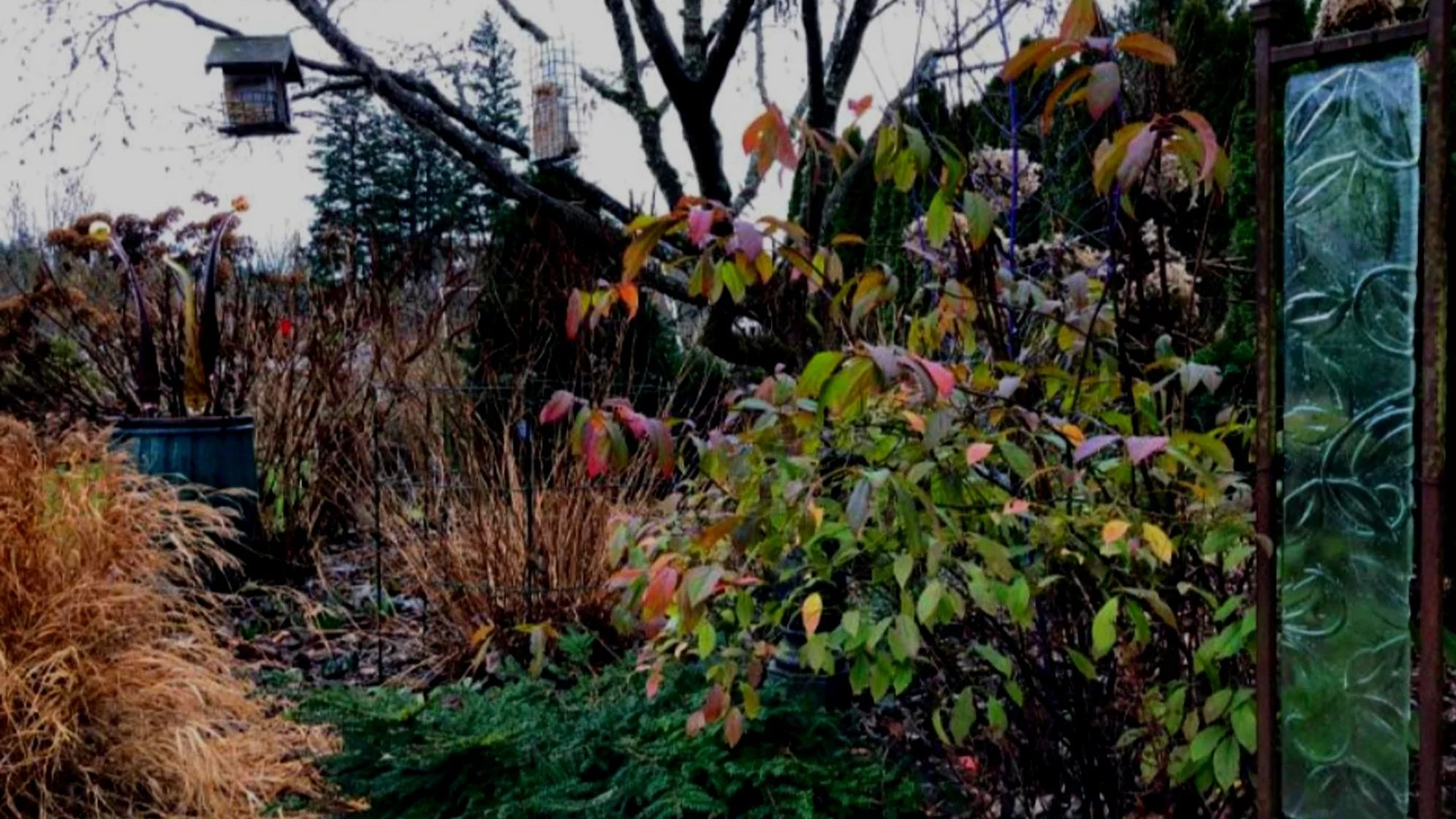First off, my apologizes to writer E.L. James for riffing on his popular novel title “50 Shades of Grey”. I rather doubt that my comments here will ever make it to the big screen. Just the same, the month of December in my garden is a pretty steamy mix of tan, brown, or black (and all the shades in between) emanating from foliage, seed heads, and bark, and frankly, I find it pretty stimulating.
Throughout the gardening season the colors that catch our eyes are of course the bright and bold primary and secondary ones like we find in a rainbow, such as red, orange, yellow, green, blue, indigo, and violet (am I the only one that learned those colors as ROY G BIV). These are happy and exuberant colors that make us joyful and full of life. Anything that is brown in our garden in the growing season is usually dead or dying or obliterated by green foliage. Brown is certainly not a color our eyes are drawn to in the summer, but by winter it is a different story.
I must admit, I never really thought about the role of brown in the garden until a few weeks ago when it suddenly struck me that despite the lack of flowers and foliage, my garden was indeed colorful and visually interesting. There was an amazing variety of brown tones, from yellowish-tan all the way to jet black. All of these variations got me thinking back to my first 64-piece set of crayons and the names they applied to each crayon, such as “burnt umber” (which is described as a dark brown made from minerals such as ochre, sienna, terracotta, brick, and rust) or “puce” (which is described as a purplish brown or reddish brown). For a little kid these were totally foreign words, but nevertheless fun to throw around as if I was some famous artist. Fast forward 60 plus years and I am no longer a kid and definitely not a famous artist, but I still like the sound of some of these names for what most of us would simply call “brown". To that end, I discovered the website Color Meanings which describes 128 different shades of brown and readily admits there are many more to choose from. It also lists 132 shades of brown that are found in nature. That’s a whole lot of brown going around that we mostly ignore until we get to winter when all of a sudden it is staring us right in the eye and we are smitten by just how beautiful brown can be. That’s exactly what happened to me and what can happen to you as well if you just take the time to observe (assuming your yard contains lots of varieties of deciduous shrubs and perennials). Here are a few that caught my eye recently:
Guara — Once the frost has hit my Guara it turns to a frothy mass of tan (or almond if you prefer).
Hydrangea blossoms — On both macrophylla and PG varieties, once the blooms have faded, they will remain on the stems most of the winter showing off their papery petals of butter cream.
Coneflower seed heads — These are an amazing glossy black atop of caramel-colored stems.
Agastache ‘Blue Fortune’ — I like to leave the bloomed-out flower stalks of this perennial for a bit of drama. The color is sort of a dull brown to dirt tone but the structure makes it all worthwhile.
Russian Sage — What’s left of this perennial is hard to describe, some stems, some foliage, and some old blooms. None of this matters because all of it is a striking silver, which offers an incredible contrast to all the browns.
Black-eyed Susan — This perennial is similar to the coneflowers with seed heads black as coal at the ends of orangish-coral stems.
Sedum ‘Autumn Joy’ — These umbelliferous flower heads had entertained me from early August when they were a bright pink, but now, after a frost or two, they are a collage of black and red seed heads.
Allium ‘Millenium’ — I leave all the flower stalks up throughout the winter on this tidy perennial and it is pure joy to watch it morph from pink globes to a combination of black seeds with papery sheaths. All of the above seed heads are as valuable for structure as they are for color.
Ninebark — This native shows off its peeling bark this time of year which is a treat to observe.
There are so many shades of brown in my garden right now that I can’t help but wander out to see what looks so alluring. I guess this is part of what designers like to call “winter interest”. To me it’s just another example of the year around beauty our gardens can offer us. If your garden isn’t calling out to you then maybe it’s time to add some “brown”.



